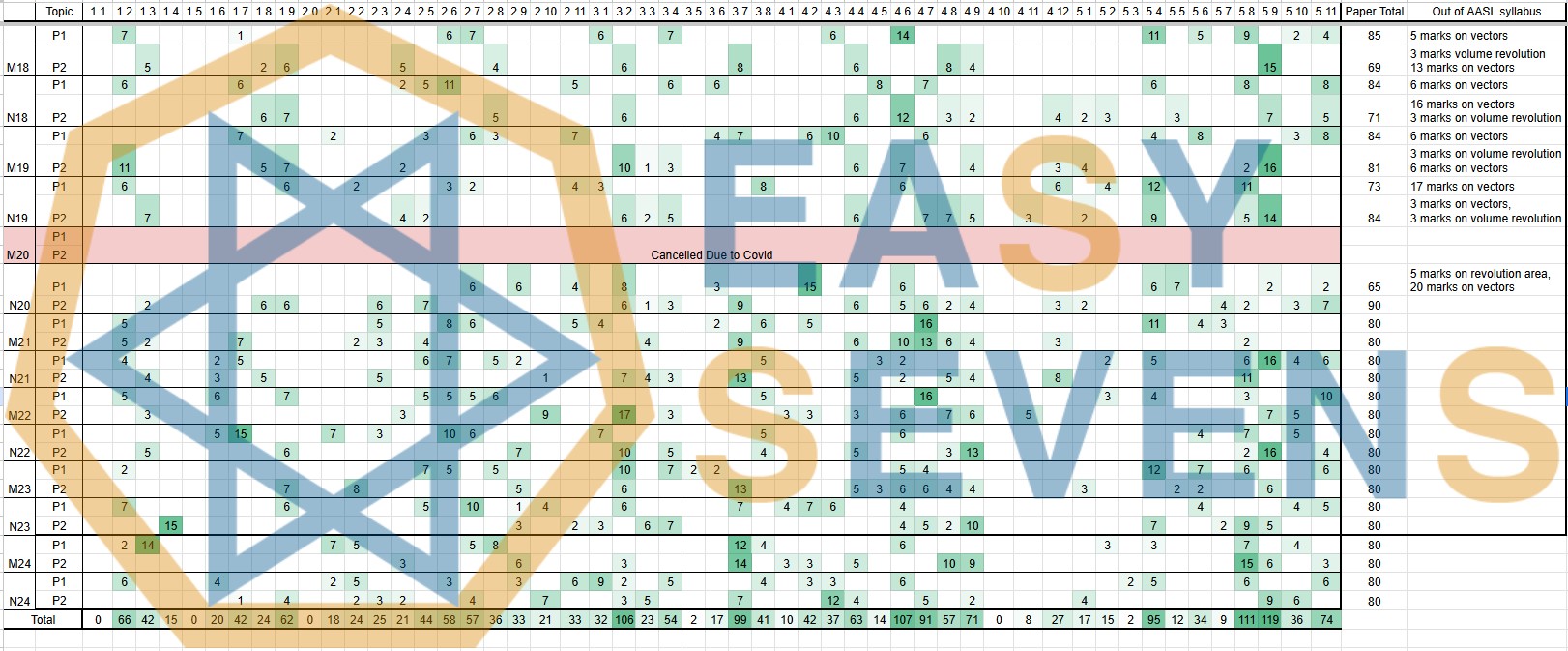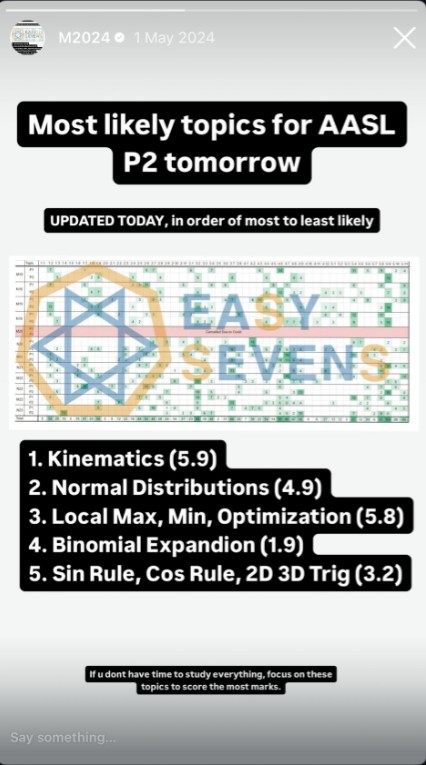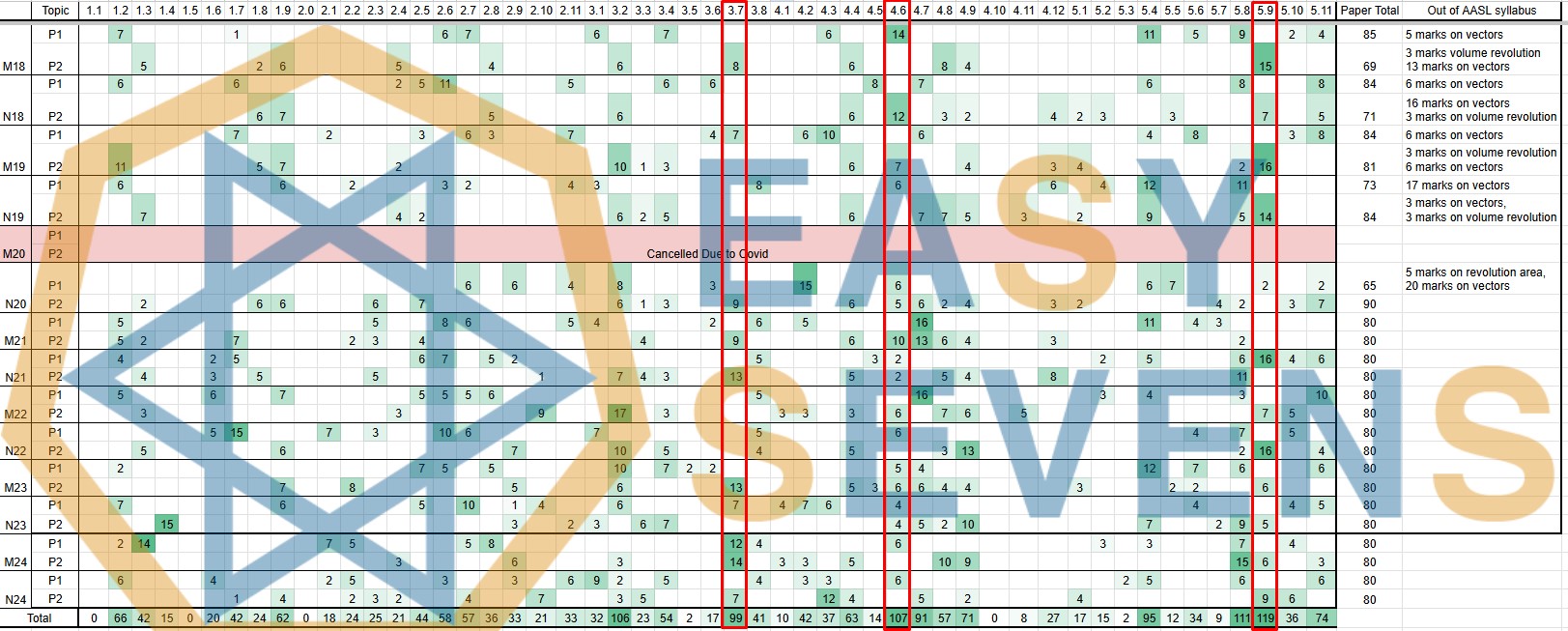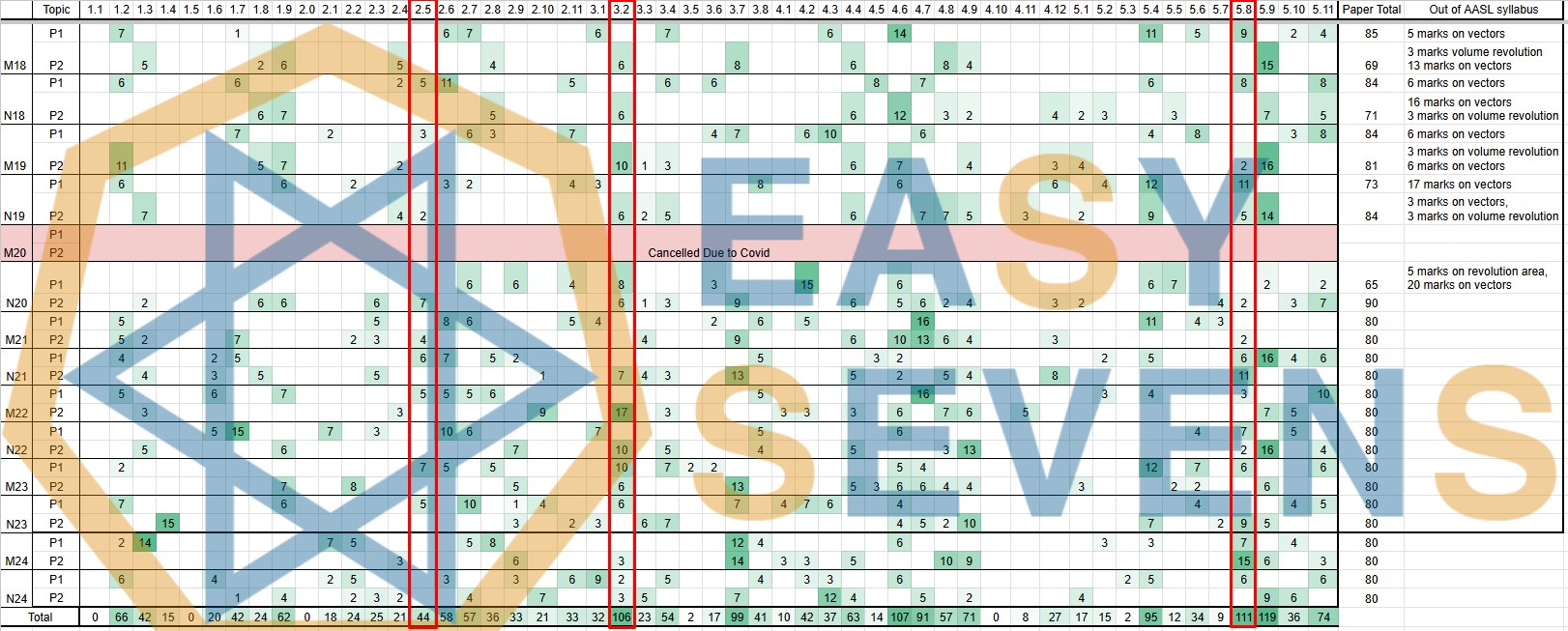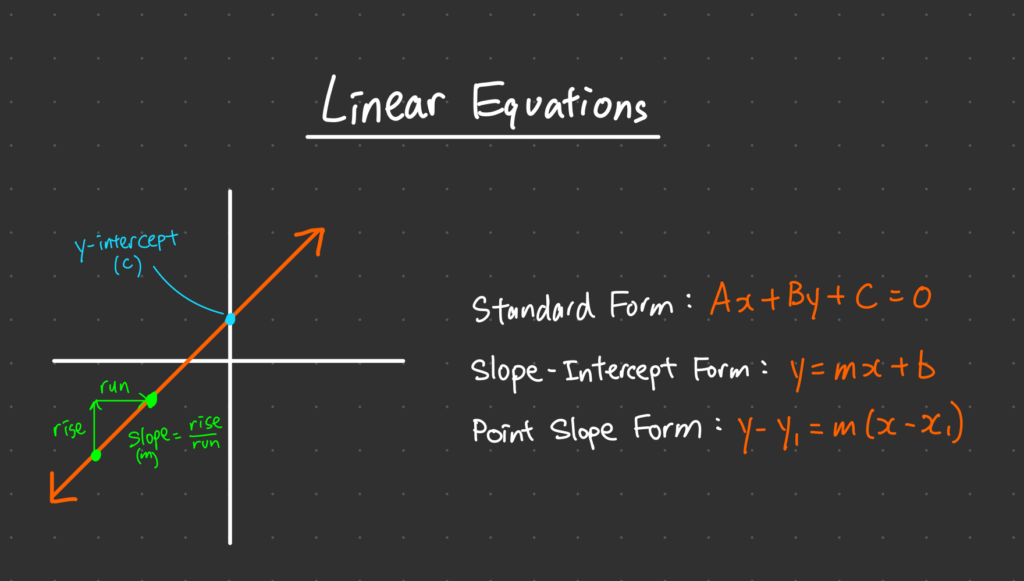Cracking the Code for M2025
Every IB Mathematics AASL exam follows patterns, and if you know what to look for, you can predict which topics are most likely to appear. While no one can guarantee the exact questions, past trends tell a compelling story. Understanding these trends can help you prioritize your revision and maximize your score.
The M2025 exam is no exception. By analyzing the statistics from previous years, we’ve identified high-priority and medium-priority topics based on their frequency and mark allocation. Some topics appear almost every session, while others follow a cyclical pattern, making a comeback after a brief absence.
This guide breaks down last year’s trends, the most important topics for this year’s exam, and how you can use this information to study smarter—not harder.
Recap of Last Year’s Exam Trends
Before diving into M2025 predictions, let’s look at how our prediction for last year’s IB AASL exams performed.
40 marks (25% of the exam) came from just five key topics.
Topic 5.8 Local Min/Max and 4.9 Normal Distributions were indeed asked in the M24 exams, and their weightings were not low either, at 22 points and 9 points across both papers respectively
Topic 5.9 Kinematics and 3.2 Sin/Cos Rule, 2D 3D Trig was a surprise in the sense that only 3 marks were allocated to these 2 topic, which was less than what our IB Math tutor predicted
- Topic 1.9 Binomial Expansion was another surprise. This topic was tested on for the 4 past examination sessions, but the IB suddenly decided to not ask about it in either paper for M24
These insights help us predict which topics are most likely to appear in the upcoming exam. Let’s break them down further.
High-Priority Topics for IB AASL M2025
These are the topics with the highest likelihood of appearing, based on their consistent presence in past exams. You should prioritize these areas in your revision.
1. Kinematics (5.9) – The Unquestionable Favorite
Reason: This is the most frequently tested topic. Over the last seven exam sessions, Kinematics has always been worth at least six marks.
✅ What You Should Focus On:
Understanding displacement, velocity, and acceleration functions.
Differentiation and integration techniques for motion problems.
Interpreting motion graphs and solving kinematic equations.
📌 Tip: Expect at least one complex multi-step question on Kinematics. Practice past paper questions extensively to build confidence.
2. Trigonometric Functions (3.7) – A Recurring Theme
Reason: This topic has appeared for the past four consecutive examination sessions. Both M23 and M24 had significant marks allocated to Trig Functions.
✅ What You Should Focus On:
Sketching and transforming sine, cosine, and tangent graphs.
Understanding amplitude, period, and phase shifts.
Applying trigonometric identities in problem-solving.
📌 Tip: Be comfortable solving equations that require algebraic manipulation of trigonometric expressions.
3. Venn Diagrams, Tree Diagrams, and Conditional Probability (4.6)
Reason: This is the third most common topic in IB AASL exams. Since the M18 session, every exam has included at least one question on this area.
✅ What You Should Focus On:
Using Venn diagrams to calculate probabilities.
Applying the Multiplication and Addition Rules of probability.
Understanding conditional probability and dependent events.
📌 Tip: Probability questions can be tricky because of wording. Carefully read each question to ensure you’re applying the correct formula.
Medium-Priority Topics for IB AASL M2025
While these topics are still important, their inclusion is slightly less predictable. However, they have a history of appearing frequently, so don’t ignore them.
4. Local Min/Max (5.8) – A Possible Reduction
Reason: This was the second most frequently asked topic in past exams. However, in M24, it had a high mark allocation, meaning IB might reduce its weight in M2025.
✅ What You Should Focus On:
Finding local maxima and minima using first and second derivatives.
Identifying critical points and points of inflection.
Solving optimization problems related to real-world scenarios.
📌 Tip: Expect at least one question on this topic, but it might be shorter than in previous years.
5. Sine and Cosine Rule (3.2) – A Declining Trend?
Reason: This was the fourth most frequently tested topic in previous years. However, recent trends suggest IB has been reducing its emphasis on this topic.
✅ What You Should Focus On:
Applying Sine Rule for non-right-angled triangles.
Using Cosine Rule for both finding missing sides and angles.
Solving area problems involving triangles.
📌 Tip: While this topic might have a reduced focus, you should still practice applying the formulas under exam conditions.
6. Composite and Self-Inverse Functions (2.5) – The Wild Card
Reason: This topic used to be guaranteed in every exam session. However, it was completely removed in M24 and N24, which suggests IB could bring it back for M2025.
✅ What You Should Focus On:
Understanding function composition and how to evaluate f(g(x)).
Finding self-inverse functions and proving their properties.
Domain and range restrictions for composite functions.
📌 Tip: Since this topic was skipped recently, IB might test it in a simpler form rather than a full-length question.
How to Use This Information for Effective Exam Preparation
Now that you know the most probable topics for M2025, here’s how to study strategically:
1. Prioritize High-Yield Topics First
Spend most of your time mastering Kinematics, Trig Functions, and Probability.
These topics are the most consistent in past exams.
2. Use Past Papers to Identify Patterns
Work through at least five years’ worth of past exams to see how each topic is tested.
Focus on understanding the style of questions rather than just memorizing solutions.
3. Revise Medium-Priority Topics Closer to the Exam
Keep these topics in your study rotation but spend slightly less time on them.
Be ready to tackle Composite and Self-Inverse Functions in case IB brings it back.
4. Simulate Exam Conditions
Time yourself when doing past paper questions.
Learn to manage your time efficiently—don’t get stuck on one question for too long.
FAQ
Not exactly. However, they often recycle concepts and test them in slightly different ways.
If trends continue, at least 40 marks (25% of the exam) will come from the 6 high-priority and medium-priority topics.
No, but you should allocate more time to high-priority topics first.
Work through past IB AASL exams under timed conditions. Analyze patterns in mark distribution.
IB sometimes adjusts question styles, but the core concepts remain the same. Focus on understanding, not just memorization.

